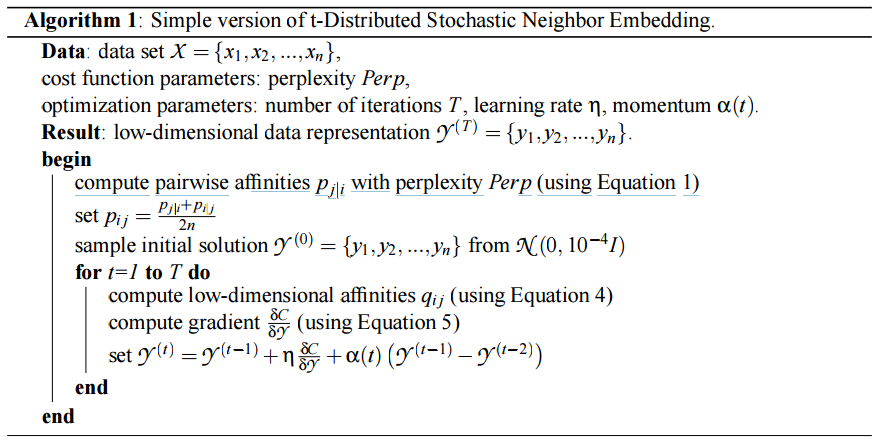I'm trying to implement the t-SNE method. It's not a very complicated algorithm as it can be described like this:
I found that to compute the pairwise affinities, I have to follow this:
My problem is to computecomputing $\sigma_i$ in this formula. In wikipediathe Wikipedia I found:
The bandwidth of the Gaussian kernels $\sigma_{i}$, is set in such a way that the perplexity of the conditional distribution equals a predefined perplexity using a binary search. As a result, the bandwidth is adapted to the density of the data: smaller values of $\sigma_{i}$ are used in denser parts of the data space.
I don't understand what this realy meanreally means. How can can I calculate $\sigma_i$ given data and perplexity?


